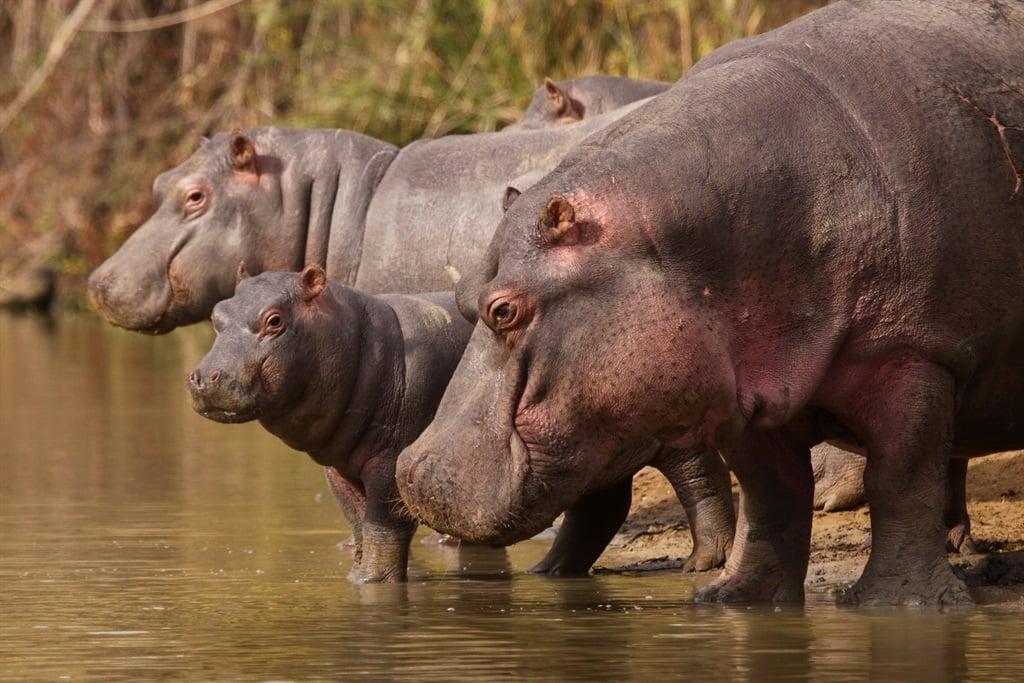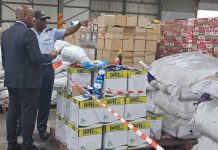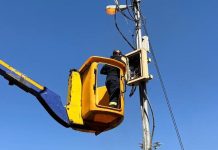Africa-Press – South-Africa. Three orphaned hippos have been released back into the wild, but their rehabilitation has required years of dedication from an Eastern Cape team of rangers and vets.
Shamwari Private Game Reserve recently released the three calves after almost two years of rehabilitation. They have since settled into a dam on the reserve, where they have formed a herd with six other hippos.
The orphans were found at the height of a drought in the Eastern Cape, which essentially dried up much of the 35km-long river running through the reserve, said Shamwari wildlife vet Dr Johan Joubert.
“It was extremely dry for many years, with very low rainfall. Parts of the river dried up, and many hippos ended up in small ponds – essentially mud puddles. Many had to walk long distances for food, and some were lost. If we did not take precautions, we would have lost more,” said Joubert.
Many hippos were relocated or found new homes for themselves, but rangers noticed that three calves were orphaned.
Joubert said:
Too young to fend for themselves, the animals were moved to Shamwari’s Wildlife Rehabilitation Centre, where they were cared for until they were old enough to survive on their own in the wild.
But adopting three wild hippos is no easy feat. Capturing a hippo in the first place is a mammoth task. Due to their thick skin, hippos are extremely difficult to dart. Even if they are darted, hippos tend to immediately run to the water, where a sedated hippo stands the risk of drowning. This means the safest way to catch a hippo is to wait for it to come to you, according to Joubert.
This requires the building of an enclosure, where food is placed to lure the hippos. Once they are inside, a door is closed using a rope pulley system.
The operation to capture the orphaned hippos required several nights of waiting in the dark. However, catching the hippos was just the start.
The three hippos required around 10% of their body weight in milk while they were in their suckling phase, and at a starting weight of 90kg, feeding then could be a full-time job.
The job was made even more difficult by the rehabilitation team’s determination to keep the hippos as wild as possible. This ruled out hand-rearing the calves with bottles. Instead, they were fed their milk – mixed from a formula used for cows and horses – out of buckets. The hippos were later weaned off the milk and onto lucerne and grass.
Joubert said:
Aside from feeding, keeping the hippos healthy required a small engineering feat – developing a dam that could be flushed every few days. Hippos defecate in water, so keeping them in a pool of stagnant water can quickly turn into a very unhealthy situation. The team devised a dam with a sluice gate that could be opened to release old water, allowing staff to then refill it with clean water.
“It’s quite a cost to build for a few hippos,” added Joubert.
But despite the cost and effort involved in rehabilitating the calves, the reserve staff didn’t hesitate for a second.
“We have to take responsibility to care for these young calves that are too young to survive on their own,” said Joubert.
“It’s also important to keep the population numbers healthy. For genetic diversity, the more animals that survive, the better,” he added.
For now, the calves appear to be settling in well among the herd. The two male calves would likely move off once they reach maturity and join up with other herds along the river, said Joubert.
For More News And Analysis About South-Africa Follow Africa-Press






